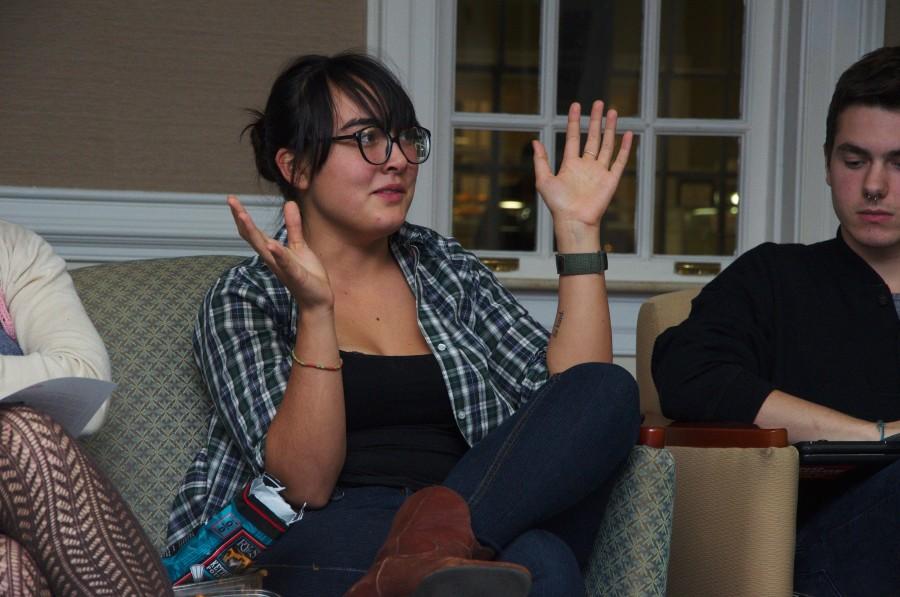Empathy, equality and access — these three values compose the title of the 85-page document put forth by the college to expand the resources available to the over 400 students at Guilford with disclosed disabilities.
The concrete goal of the plan is to create “universal access” for all spaces and academic facilities on campus, meaning that when anything is designed it should be made accessible in the best way possible for all people. However, the broader goal of the new plan, which has a five-year implementation modeled after the school’s Strategic Long Range Plan, involves raising awareness of differences that exist on campus.
“I believe that this plan is not only important for providing resources to disabled students, but also for building a better sense of community on campus,” said junior Bryan Dooley, who was heavily involved in providing student input for the plan.
“There should be an attitudinal change on campus for people to be open and expressive in communicating about who they are,” said Associate Coordinator for Disability Services Georgie Bogdan of the plan’s implications to raise awareness of psychological diversity on campus.
Although the document is bound by the legal definition of “disability” as defined by the Americans with Disabilities Act, it also recognizes the widespread differences in the way all students think and behave and attempts to promote ways to accommodate those differences.
One example of this is an online note-taking system developed by the college to facilitate better in-class learning.
“The new plan — “Empathy, Equality and Access” — grew out of the Senate’s Diversity Action Plan originally,” said Learning Commons Director Melissa Daniel Frink. “Disabilities were not originally represented under the diversity plan. Out of those meetings, the decision to create a subcommittee to address expansion of disability resources was created.”
The document also encompasses cultural changes in the way accessibility is thought about for students with disabilities.
“Although the plan has a five-year scope, the need to continually address disability will never end,” said Frink. “There needs to be more collaboration among departments in the future regarding ways to better facilitate student achievement.”
“There needs to be a shift in the school from being reactive to proactive,” said Director of Disability Services Kim Burke. “More importantly, it’s a cultural shift to start to think about what it truly means to promote ‘accessibility.'”
The plan examines the ways in which students with disabilities are provided with equal resources in four ways, not only from an angle of physical space, but also from attitudinal, informational and policy/procedural standpoints.
“In terms of academic success, students with disabilities at Guilford already achieve a higher graduation rate than students with no documented disability,” said Burke.
“What we really want to achieve with this plan is to create greater acceptance, to create an atmosphere where people don’t hide their authentic selves and own who they really are,” said Burke. “Then we can treat people in a more human way.”
Student support for the plan at the Nov. 9 Community Senate meeting was overwhelmingly in favor of approving the implementation of the document. However, some students called for more input from the wider community. As a result, the decision to give support to the plan was postponed until the Nov. 16 meeting.
The plan was endorsed at the Nov. 16 meeting with no opposition.
“Ultimately, this is about community and finding ways to help each other,” said senior and Community Senate Clerk/President Yahya Alazrak in concluding the Nov. 9 meeting. “I feel that this plan is a step in the right direction towards doing that.”

